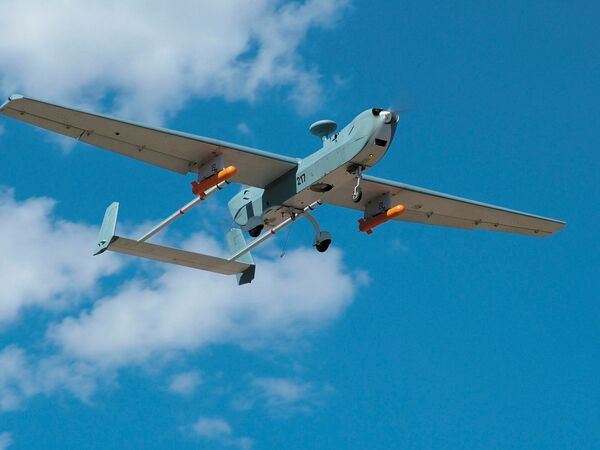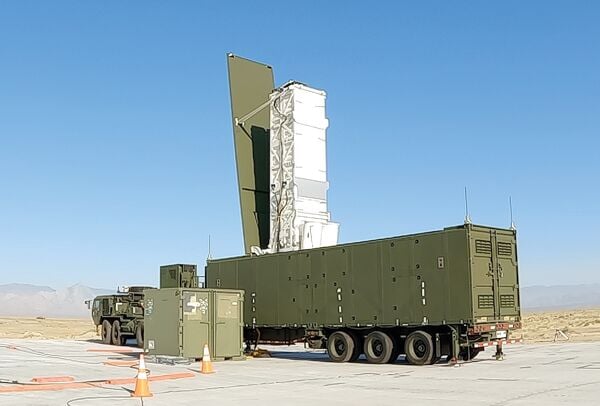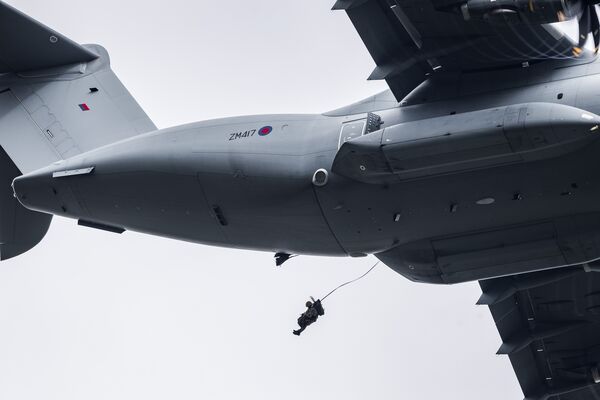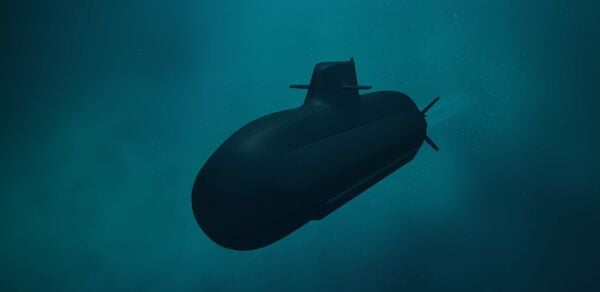- About
- Intara
- Capabilities
- Advisory
- Resources
- News
- Store
BAE Systems unveils new M-Code-capable GPS receiver
13 June 2022
by Carlo Munoz


An RQ-5 Hunter UAS is equipped with the GPS-enabled Viper Strike munition. (MBDA)
The newest variant of the BAE Systems-built global positioning system (GPS) guided weapons receiver will be capable of transmitting across Military Code (M-Code) signals, company officials announced this week.
The new Strategic Anti-jam Beamforming Receiver – M-Code (SABR-M) GPS receiver leverages “advanced beamforming technology” to improve signal reception across military and civilian GPS spectrums, while meeting size, weight, and power (SWaP) requirements in unmanned aerial systems (UAS), precision-guided munitions, and advanced missile systems, according to a 7 June company statement.
“We're making our full portfolio of military GPS solutions M-Code-compatible to meet warfighters' need for reliable positioning, navigation, and timing data to achieve their missions,” said Doug Lloyd, director of weapon systems GPS at BAE Systems, in the 7 June statement.
Company officials anticipate that the new M-Code-capable SABR will be ready for full-rate production at the end of 2022. Production will take place at BAE Systems' new facility in Cedar Rapids, Iowa, according to the statement.
US Army deploys Mid-Range Capability in Philippines
16 April 2024
by Kapil Kajal


The MRC weapon system (pictured above from its trials in June 2023) is a containerised version of the Mk 41 VLS that can be integrated and fired from the bed of a M983A4 Heavy Expanded Mobility Tactical Truck. (US Army)
The US Army's 1st Multi-Domain Task Force (1MDTF) has deployed its Mid-Range Capability (MRC) weapon system – also known as the Typhon Weapons System – at Northern Luzon in the Philippines as part of Exercise ‘Salaknib 24', the US Army Pacific said in a press release on 15 April.
This deployment aims to enhance the Philippines' maritime defence capabilities, while bolstering interoperability and readiness within the US-Philippine Alliance, the US Army Pacific said.
The MRC – made up of four launchers, a battery operations centre (BOC), a High Mobility Multipurpose Wheeled Vehicle BOC support vehicle, and battery reload capability – reached the Philippines aboard the C-17 Globemaster III airframe, the US Army Pacific added.
According to the US Army Pacific, the 1MDTF's MRC is a land-based, ground-launched system that enhances multidomain fires. The MRC launchers can fire the Standard Missile (SM)-6 and the Tomahawk Land Attack Missile (TLAM).
UK continues to open up A400M tactical capabilities, with low-level paradrop now cleared
15 April 2024
by Gareth Jennings


A paratrooper exits one of the two side doors of the A400M during a demonstration of the aircraft's low-level parachuting capabilities. (Crown Copyright)
The United Kingdom continues to open up the tactical capabilities of the Royal Air Force's (RAF's) Airbus A400M Atlas C1 fleet, with the announcement on 14 April that the airlifter is now cleared for low-level parachuting.
The UK Ministry of Defence (MoD) said that the clearance had been awarded after trials in the US in 2023 were followed by a capability demonstration by the Air and Space Warfare Centre in March.
“In a series of day and night sorties, paratroopers were dropped simultaneously from both side exit doors over Everleigh Drop Zone on Salisbury Plain [in southern England],” the MoD said, adding, “24 Squadron and the Airborne Delivery Wing will now train their instructor cadre, aircrew, and despatchers before the broader airborne force.”
As noted in the announcement, the capability demonstration involved the RAF, the British Army, Defence Equipment and Support, and Airbus.
UDT 2024: Type 212 NFS lithium-ion battery system tests move forward
15 April 2024
by Neil Dee


A graphic depiction of the NFS U212 submarine. (OCCAR)
Tests of the lithium-ion (Li-ion) battery system for the Italian Navy's Improved Todaro (Type 212 NFS)-class submarines are moving forward, according to the Organisation for Joint Armament Cooperation (OCCAR), which manages the programme.
Speaking at the Undersea Defence Technology (UDT) 2024 conference and exhibition in London on 10 April, Commander Alessandro Irvia, Platform Officer, U212 Near Future Submarine (NFS) Programme, confirmed that a thermal propagation test conducted on 9 April had achieved positive results. The thermal propagation test was the latest in a series of tests conducted to ensure the safety of the new Li-ion battery system.
During the thermal propagation test, Cdr Irvia said that no flame or explosions were produced, only gas was released.
The newest variant of the BAE Systems-built global positioning system (GPS) guided weapons receiver ...
Latest Podcasts
A focus on Libya
In this podcast Janes senior analyst James Trigg, joins Harry Kemsley and Sean Corbett to discuss Libya. Historic civil and political unrest have made it a country of interest globally for decades. Whilst other conflicts and world events have fo...
Listen nowJanes Case Studies
Using Janes Intara to build a common intelligence picture: Russian build up on the Ukrainian border
View Case StudyNews Categories
 C4ISR Details
C4ISR Details